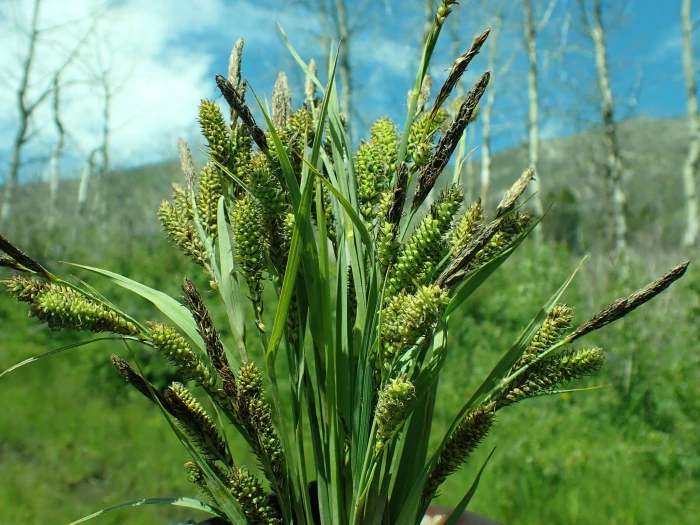Nebraska Sedge
(Carex nebrascensis)
Nebraska Sedge (Carex nebrascensis)
/
/

Matt Lavin
CC BY 4.0
Image By:
Matt Lavin
Recorded By:
Copyright:
CC BY 4.0
Copyright Notice:
Photo by: Matt Lavin | License Type: CC BY 4.0 | License URL: http://creativecommons.org/licenses/by/4.0/ | Rights Holder: Matt Lavin | Publisher: iNaturalist | Date Created: 2023-07-01T11:31:04-07:00 |

























Estimated Native Range
Climate Requirements for Perth Amboy, New Jersey
| This Plant | Your Site | Plant Suitability for Your Location | ||
|---|---|---|---|---|
| • Precipitation | 4" - 99" | 48" | Aquatic | Aquatic |
| • High Temp. | 61°F - 101°F | 86°F | Your summer temperatures are normal for this plant. | Excellent |
| • Low Temp. | -6°F - 37°F | 22°F | Your winter temperatures are normal for this plant | Excellent |
This plant should grow well at your location with about N inches per year (Y minutes per month) of irrigation.
Summary
Carex nebrascensis, commonly known as Nebraska sedge, is a perennial herbaceous plant native to wet meadows, marshes, and stream banks in the central and western United States and central Canada. It is particularly adapted to riparian zones and wetland habitats, including those in the Sierra Nevada and Great Plains. This sedge typically grows up to 35 inches tall and features upright, spongy stems with waxy, bluish-green leaves that are characteristic of the Carex genus.
Nebraska sedge is valued for its ability to stabilize soil and filter water in its native wetland environments, making it an excellent choice for restoration projects and naturalized plantings. It is often used in rain gardens, bioswales, and as a riparian buffer to prevent erosion. In cultivation, it requires consistently moist to wet soils and can tolerate periodic submersion and alkaline conditions. It thrives in full sun to part shade. While it does not have showy flowers, its grass-like appearance provides texture and greenery to water features and wetland gardens.CC BY-SA 4.0
Nebraska sedge is valued for its ability to stabilize soil and filter water in its native wetland environments, making it an excellent choice for restoration projects and naturalized plantings. It is often used in rain gardens, bioswales, and as a riparian buffer to prevent erosion. In cultivation, it requires consistently moist to wet soils and can tolerate periodic submersion and alkaline conditions. It thrives in full sun to part shade. While it does not have showy flowers, its grass-like appearance provides texture and greenery to water features and wetland gardens.CC BY-SA 4.0
Plant Description
- Plant Type: Grass
- Height: 1-2 feet
- Width: 1.5-3 feet
- Growth Rate: Moderate
- Flower Color: N/A
- Flowering Season: Spring, Summer
- Leaf Retention: Deciduous
Growth Requirements
- Sun: Full Sun, Part Shade
- Water: High
- Drainage: Fast, Medium, Slow
Common Uses
Bird Garden, Erosion Control, Low Maintenance, Street Planting, Water Garden
Natural Habitat
Wet meadows, marshes, and stream banks in the central and western United States and central Canada
Other Names
Common Names: Dewey Sedge
Scientific Names: Carex nebrascensis, Carex jamesii, Carex jamesii var. nebrascensis, Carex jamesii var. ultriformis, Carex nebrascensis var. eruciformis, Carex nebrascensis var. praevia, Carex nebrascensis var. ultriformis
GBIF Accepted Name: Carex nebrascensis